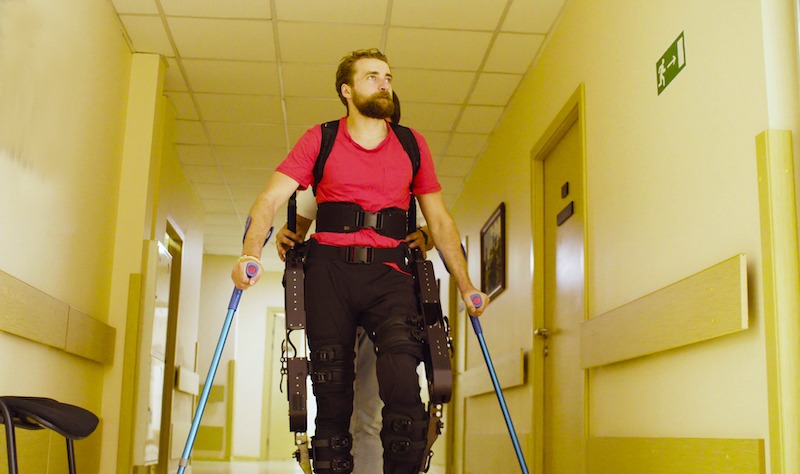Researchers at Clinatec along with the University of Grenoble have developed an exoskeleton which uses sophisticated algorithms to decode messages sent from a brain interface chip (an 8*8 sensor array coupled to a wireless data transmitter) with 64 potential sensor points to allow a paralysed man to control his movements.
The chip called WIMAGINE is a marvel in itself. It has to pick up minute signals in the brain and securely broadcast them to a dedicated computer which translates the ElectroCorticoGrams in to the servo commands which moves the exoskeleton.
The trick is to do all of this in 350mS or less. So from thinking about raising your right leg to actually raising your right leg. If it takes longer then instability occurs. I guess the instability is more in the human domain than in the machine as the mind would question why an instruction has not occurred and maybe overcompensate.
Anyone who has ever tried to steer a long barge on a canal will fully understand. A small input on the tiller has little effect (or so it seems) so the novice applies greater input and before you know it the barge is doing its own thing in a bad way.
So, the race is on to make the processing time as short as possible and researchers are looking at AI to help with this.
